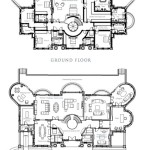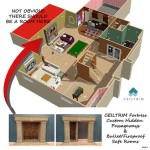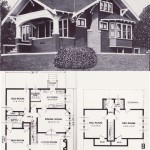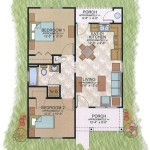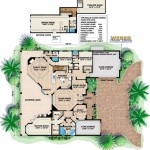Small House Plans For Narrow Lots are specifically designed to fit on properties with limited frontage while maximizing space and functionality. These plans are ideal for urban settings, infill development, and areas with zoning restrictions that limit building size or setbacks. Whether you’re a first-time homebuyer looking to build on a narrow lot or a seasoned homeowner seeking to downsize or build a guest house, small house plans offer a range of options to meet your needs.
With careful planning and innovative design, small house plans can incorporate all the essential elements of a comfortable and stylish home. From cozy living areas to efficient kitchens and well-appointed bedrooms, these plans make the most of every square foot. With their compact design, small house plans are also more cost-effective to build and maintain, making them a smart choice for homeowners looking to minimize their environmental impact.
In the following sections, we will explore the advantages of small house plans for narrow lots, discuss design considerations, and showcase inspiring examples of these space-saving homes.
When designing small house plans for narrow lots, it’s essential to consider the following key points:
- Maximize Vertical Space
- Utilize Natural Light
- Open Floor Plans
- Multi-Purpose Rooms
- Built-In Storage
- Outdoor Living Spaces
- Energy Efficiency
- Zoning Restrictions
- Budget Constraints
- Future Expansion
By carefully considering these factors, you can create a small house plan that is both functional and stylish, making the most of your narrow lot.
Maximize Vertical Space
When designing small house plans for narrow lots, maximizing vertical space is crucial to creating a comfortable and functional home. By utilizing the height of your home, you can add additional living space without increasing the footprint of the house.
One way to maximize vertical space is to incorporate a loft or mezzanine into your design. This can create an additional bedroom, home office, or play area without taking up valuable floor space. Lofts and mezzanines can also be used to create a sense of separation and privacy within the home.
Another way to maximize vertical space is to use built-in storage and furniture. Built-in bookshelves, cabinets, and closets can be designed to fit into awkward spaces and make use of vertical height. Murphy beds, which fold up into the wall when not in use, are also a great way to save space in small bedrooms.
Finally, don’t forget to make use of the space under your stairs. This area can be used to create a small storage closet, a cozy reading nook, or even a home office.
By carefully considering how to maximize vertical space, you can create a small house plan for a narrow lot that is both functional and stylish.
Utilize Natural Light
Incorporating natural light into your small house plan for a narrow lot is essential for creating a bright and inviting home. Natural light can help to reduce energy costs, improve mood, and boost productivity. There are a number of ways to maximize natural light in your home, including:
- Large Windows and Skylights: Installing large windows and skylights is a great way to let natural light flood into your home. Place windows on multiple walls to create cross-ventilation and reduce the need for artificial lighting. Skylights are a great way to bring light into interior spaces that don’t have access to windows.
- Light-Colored Walls and Ceilings: Light-colored walls and ceilings reflect light, making your home feel brighter and more spacious. Avoid using dark colors, which can absorb light and make your home feel smaller.
- Mirrors: Mirrors can be used to reflect light around a room, making it feel larger and brighter. Place mirrors opposite windows or in areas with limited natural light.
- Open Floor Plans: Open floor plans allow natural light to flow more easily throughout your home. Avoid using walls or partitions that can block light.
By incorporating these tips into your small house plan for a narrow lot, you can create a home that is both functional and stylish, and that makes the most of natural light.
Open Floor Plans
Open floor plans are a great way to maximize space and light in small house plans for narrow lots. By removing walls and partitions between different living areas, you can create a more spacious and inviting home.
Open floor plans are also more flexible than traditional floor plans, allowing you to easily reconfigure your space to meet your changing needs. For example, you could use an open floor plan to create a large living area that can be used for entertaining, dining, and relaxing. Or, you could use an open floor plan to create a more intimate and cozy space by adding a few strategically placed pieces of furniture.
When designing an open floor plan for a narrow lot, it’s important to consider the flow of traffic and the placement of furniture. You want to create a space that is both functional and stylish, and that makes the most of the available space.
One way to create a functional open floor plan is to use different types of furniture to define different areas of the home. For example, you could use a sofa to define the living area, and a dining table to define the dining area. You could also use rugs to create different zones within the open floor plan.
Multi-Purpose Rooms
Multi-purpose rooms are a great way to maximize space and functionality in small house plans for narrow lots. By designing rooms that can serve multiple purposes, you can create a more flexible and adaptable home.
One of the most common types of multi-purpose rooms is the great room. A great room is a large, open space that combines the functions of the living room, dining room, and kitchen. This type of room is perfect for entertaining, as it allows guests to move freely between different areas. Great rooms can also be used to create a more intimate and cozy space by adding a few strategically placed pieces of furniture.
Another type of multi-purpose room is the guest room/home office. This type of room can be used to accommodate overnight guests, or it can be used as a home office during the day. By adding a Murphy bed or a fold-out sofa, you can easily convert this room from a guest room to a home office, and back again.
Multi-purpose rooms can also be used to create more storage space in your home. For example, you could add built-in shelves or cabinets to a multi-purpose room to create a home library or a media center. You could also add a closet to a multi-purpose room to create a more organized and functional space.
By incorporating multi-purpose rooms into your small house plan for a narrow lot, you can create a more flexible, adaptable, and functional home.
Built-In Storage
Built-in storage is a great way to maximize space and functionality in small house plans for narrow lots. By incorporating built-in storage into your home, you can create a more organized and clutter-free space.
- Cabinets and Shelves: Built-in cabinets and shelves can be used to store a variety of items, from books and dishes to clothes and linens. By incorporating built-in cabinets and shelves into your home, you can create a more organized and efficient storage system.
- Closets: Built-in closets are a great way to add more storage space to your home without taking up valuable floor space. Built-in closets can be designed to fit into any space, and they can be customized to meet your specific storage needs.
- Drawers: Built-in drawers are a great way to store small items that would otherwise be difficult to organize. Built-in drawers can be used to store anything from utensils and silverware to jewelry and office supplies.
- Murphy Beds: Murphy beds are a great way to save space in small bedrooms. Murphy beds fold up into the wall when not in use, freeing up valuable floor space. Murphy beds are a great option for guest rooms, home offices, or any other room where space is at a premium.
By incorporating built-in storage into your small house plan for a narrow lot, you can create a more organized, functional, and stylish home.
Outdoor Living Spaces
When designing small house plans for narrow lots, it’s important to consider the potential for outdoor living spaces. Outdoor living spaces can extend the living space of your home and provide a place to relax, entertain, and enjoy the outdoors.
- Patios: Patios are a great way to create an outdoor living space that is both functional and stylish. Patios can be used for dining, entertaining, or simply relaxing. They can be made from a variety of materials, including concrete, pavers, or stone.
- Decks: Decks are another popular option for outdoor living spaces. Decks are typically made from wood or composite materials and are elevated off the ground. Decks can be used for dining, entertaining, or sunbathing. They can also be used to create a more private outdoor space.
- Balconies: Balconies are a great option for small homes that don’t have a lot of outdoor space. Balconies can be used for dining, entertaining, or simply relaxing. They can also be used to grow plants or herbs.
- Courtyards: Courtyards are a great way to create a private outdoor space in the heart of your home. Courtyards can be used for dining, entertaining, or simply relaxing. They can also be used to grow plants or herbs.
By incorporating an outdoor living space into your small house plan for a narrow lot, you can create a more functional and enjoyable home.
Energy Efficiency
Incorporating energy-efficient features into your small house plan for a narrow lot is essential for reducing your energy costs and environmental impact. Here are a few key energy-efficient features to consider:
- Insulation: Proper insulation is one of the most important factors in reducing energy costs. Make sure your home is well-insulated in the attic, walls, and floors. This will help to keep your home warm in the winter and cool in the summer, reducing the need for heating and cooling.
- Windows and Doors: Energy-efficient windows and doors can also help to reduce energy costs. Look for windows and doors that have a high Energy Star rating. These products are designed to minimize heat loss in the winter and heat gain in the summer.
- Appliances: When purchasing appliances, choose energy-efficient models. Look for appliances that have a high Energy Star rating. These products are designed to use less energy than traditional models.
- Lighting: LED and CFL light bulbs are much more energy-efficient than traditional incandescent light bulbs. By switching to LED or CFL bulbs, you can reduce your lighting costs and environmental impact.
By incorporating these energy-efficient features into your small house plan for a narrow lot, you can create a more sustainable and cost-effective home.
Zoning Restrictions
Zoning restrictions are regulations that govern the use of land and buildings within a specific area. These restrictions can impact the design and construction of small house plans for narrow lots in a number of ways.
One of the most important zoning restrictions to consider is the lot coverage ratio. The lot coverage ratio is the percentage of the lot that can be covered by buildings and other structures. This restriction can limit the size of your home and the amount of outdoor space you have.
Another important zoning restriction to consider is the setback requirement. The setback requirement is the minimum distance that a building must be set back from the property line. This restriction can limit the placement of your home on the lot and the amount of usable space you have.
In addition to lot coverage and setback requirements, zoning restrictions may also regulate the height of buildings, the number of stories, and the types of uses that are allowed on a property. It is important to carefully review the zoning restrictions for your property before you begin designing your home.
If you are considering building a small house on a narrow lot, it is important to work with an experienced architect or builder who is familiar with the zoning restrictions in your area. They can help you to design a home that meets your needs and complies with all applicable regulations.
Budget Constraints
Budget constraints are an important consideration for any building project, and small house plans for narrow lots are no exception. There are a number of factors that can affect the cost of your home, including the size of the home, the materials used, and the complexity of the design. It is important to carefully consider your budget before you begin designing your home, and to work with an experienced architect or builder who can help you to create a home that meets your needs and fits your budget.
- Size of the Home: The size of your home is one of the biggest factors that will affect the cost of construction. A larger home will require more materials and labor, and will therefore be more expensive to build. If you are on a tight budget, you may want to consider a smaller home.
- Materials Used: The materials used to build your home will also affect the cost of construction. Some materials, such as brick and stone, are more expensive than others, such as vinyl and siding. If you are on a tight budget, you may want to consider using less expensive materials.
- Complexity of the Design: The complexity of the design of your home will also affect the cost of construction. A home with a simple design will be less expensive to build than a home with a complex design. If you are on a tight budget, you may want to consider a home with a simple design.
- Other Factors: In addition to the size, materials, and complexity of the design, there are a number of other factors that can affect the cost of construction, such as the location of the property, the availability of labor, and the cost of permits. It is important to factor in all of these costs when you are budgeting for your home.
By carefully considering your budget and working with an experienced architect or builder, you can create a small house plan for a narrow lot that meets your needs and fits your budget.
Future Expansion
When designing a small house plan for a narrow lot, it is important to consider the potential for future expansion. As your family grows or your needs change, you may want to add on to your home. By planning for future expansion, you can make it easier and less expensive to add on to your home in the future.
- Consider the location of your home on the lot. When placing your home on the lot, leave some space around the perimeter of the home for future additions. This will give you the flexibility to add on to your home in any direction.
- Design your home with a flexible floor plan. A flexible floor plan will allow you to easily add on to your home in the future. For example, you could design your home with an open floor plan that can be easily reconfigured to accommodate new additions.
- Use modular construction methods. Modular construction methods involve building your home in sections that can be easily added on to in the future. This can make it faster and less expensive to add on to your home in the future.
- Consider your budget for future expansion. When designing your home, it is important to factor in the cost of future expansion. This will help you to make informed decisions about the size and design of your home.
By planning for future expansion, you can create a small house plan for a narrow lot that will meet your needs both now and in the future.










Related Posts


